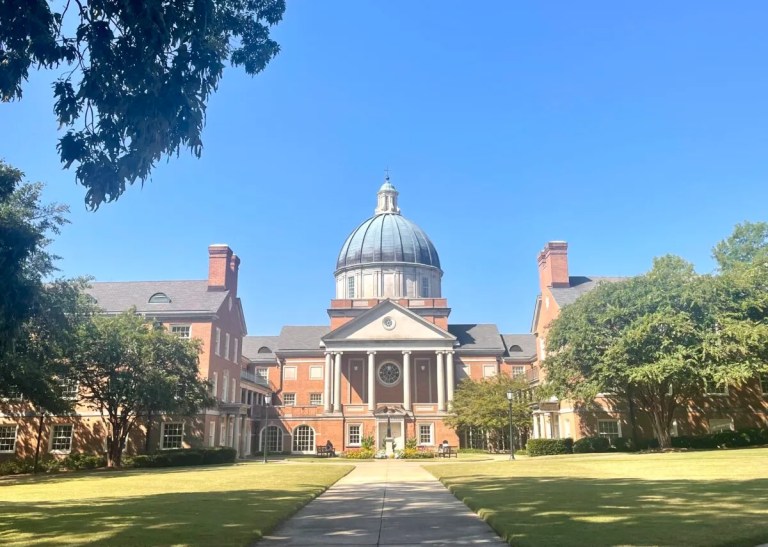Reviewed by: Nathan Watson
How Mountain Brook is transforming Memory Triangle into a pollinator’s paradise
Reading time: 4 minutes

In February 2023, Mountain Brook became the first Bee City USA in Alabama.
Notable native habitat efforts in 2023 included the installation of a native plant pollinator garden at city hall, the formation of the Environmental Sustainability committee and the creation of native habitat educational events to raise awareness.
One of the first projects the City is tackling in its second year as a Bee City USA affiliate is transforming the formal gateway to Crestline Village into a haven for pollinators.
Read on to learn more about this new exciting plan and how it will help our native bees.
What are they doing to Memory Triangle?

If you’ve traveled to Crestline Village lately, you’ve probably noticed the ongoing redevelopments—especially one in Memory Triangle.
The proposed landscape design will be less formal and will have a more relaxed, natural feel. The seed mix will contain various native grasses, and flowers that will help support native bees, butterflies, moths and birds, will sequester carbon into the ground and will stabilize the soil in Memory Triangle.
With the ongoing project continuing to push forward, the community is buzzing with ideas for reviving the Memory Triangle.
Save the native bees
By sprucing up the seed mixture, bees and other insects will be more attracted to the plants flourishing.
The main idea is to become the focal point of entry to bees and other pollinators. This is how they’re going to do it:
- Top soil will be added, and the first month or two may involve soil conditioning and preparation to minimize the weed seedbank, promoting the long-term success of the meadow.
- A native seed mix of millet, purple lovegrass, and side oats gramma will go in next (late summer/early fall).
- A seed mix of 14 native wildflowers will be broadcast in November to take advantage of the cold stratification process.
- A 10 ft-wide strip of native Buffalo grass will serve as the border for the Triangle, lending a somewhat formal, intentional “edge” to the more relaxed look in the center of the Triangle.
The triangle will be more composed and feature a multitude of soils, seeds and flowers that will adhere to Mountain Brook’s affiliation with Bee City USA.
We talked to Dana Hazen, the Director of Planning, Building, and Sustainability for the City of Mountain Brook about the seed installation and why it matters. Here’s what she said:
“I’m very excited about the opportunity to use the Triangle to raise awareness in the community about the importance of native habitats to our ecosystem. Also, to set an example that may promote an interest in appreciate for a more relaxed feel in our individual landscape design choices.”
Dana Hazen, Director of Planning, Building, and Sustainability, City of Mountain Brook
What this means for Memory Triangle




Once the project is complete, Memory Triangle will consist of a variety of native plants, including:
- Blackeyed Susan: Several species of birds feast on mature flower heads + host plant butterflies
- Butterfly Milkweed: a source of nectar for butterflies (especially the Monarch), hummingbirds and bees
- Gray Goldenrod: Supports 115 butterfly species, 11 native bee species + various pollinating moths
- Indian Blanket: a larval host for Buckeye + Checkerspot butterflies
- Maryland Golden Aster: Late fall blooms support fall-migrating Monarch
For a full list of the proposed plants and their benefits to the local ecosystem, head to the City’s website to learn more.
We can’t wait to see what this new project will bring!
Follow us on Facebook, Instagram + LinkedIn to stay updated.



